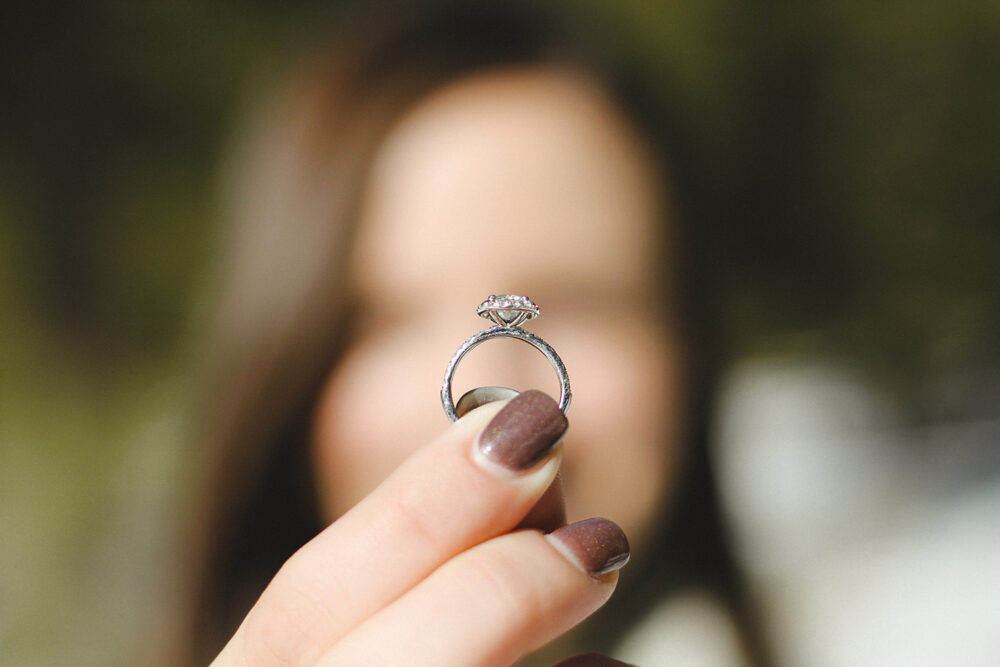Love may be lost – but who keeps the ring?
 The engagement ring is often one of a couple’s most cherished items, but what happens to it at separation?
The engagement ring is often one of a couple’s most cherished items, but what happens to it at separation?
This is a conundrum faced by an increasing number of people as it becomes more and more common for couples to live together before they walk down the aisle.
There are cases dating back to 1926 in which Australian Courts have required the return of the engagement ring. In such cases, the Court has determined that if the gift of the ring was made in contemplation of marriage and the marriage did not proceed then the ring giver is entitled to the return of the ring, and in instances where the wedding did not proceed retaining the ring would be unconscionable. However, these past cases do not necessarily reflect the view of the Court in more recent times.
Whilst it remains the case that an engagement ring can be considered a conditional gift (that is, the gift of the ring is subject to the marriage taking place), not all cases are that straightforward. It is often the case that prior to marriage, parties are living together in a de facto relationship, meaning that the property settlement provisions pursuant to Part VIIIAB of the Family Law Act 1975 (“the Act”) may apply.
Property under the Act is defined as “property to which those parties are, or that party is, as the case may be, entitled to whether in possession or reversion”. This applies to parties who are married or in a de facto relationship, and can include jewellery, meaning that an engagement (or wedding) ring, and which party retains it, can be the subject of an Order.
How is the value of an engagement ring calculated?
It is important to note that if the Court is asked to make an Order about an engagement ring, or other piece of jewellery, its value must also be considered. In the vast majority of cases, the value attributed to the engagement ring is a fraction of the purchase price. There is a common misconception that the relevant value is the purchase or insurance value however this is not correct. As is the case with other sundry assets, the value for the purpose of property settlement is the current second-hand value, which is often far lower than the purchase price. Note that the depreciable value of a ring is influenced by its stones; if there are significant precious stones, there may not be a loss of value. In most cases though, if a number of years have passed between the purchase of the ring and the parties’ separation, the value of the ring is nominal and considered to be sentimental only. In these cases, the ring would likely be excluded from the asset pool and / or the settlement negotiations.
Example cases
Ultimately, the fate of the engagement ring will turn on the facts of each case. Some interesting examples are found in the cases of Damiani and Galvan. In the case of Damiani & Damiani [2012] FamCA 535, the parties married and then lived together for 19 months before separating. The husband asserted that the wife’s engagement ring was worth $15,000, while the wife asserted it was worth significantly less. Whilst the Court acknowledged that the normal practice would be to exclude the engagement ring from the asset pool, the wife proposed to return the ring to the husband on the basis that he take it at the value he asserted it to have. This approach was agreed by the husband and, accordingly, the Court ordered the return of the ring.
The case of Galvan & Galvan and Ors [2015] FamCA 1092 dealt with a ‘marriage pendant’ rather than an engagement ring, although the Court applied the same principles. The case concerned a marriage of 9 years, where following separation the husband sought the return of a marriage pendant gifted to the wife at the time of the marriage. The Court determined that if the marriage had not proceeded then it may have been appropriate to return the pendant, but in circumstances where the marriage did proceed and indeed persisted, the pendant remained the property of the wife and given the personal nature of the gift, it was her right to retain it.
In summary…
Parties will often choose to exclude an engagement ring from the property pool because of its sentimental value, and nominal monetary value. However, in instances where a party has sought to have an engagement ring included, the Court does not seem to have hesitated to include engagement rings in the asset pool, particularly if this approach is agreed between the parties.
The way that engagement rings are accounted for in property settlement will vary on a case by case basis and it is strongly advised that legal advice is sought.
Get in touch!
If you require any assistance or guidance on any matter relating to separation, divorce, property settlement or children’s issues, please get in touch with our caring and experienced Family Law Team or call 1800 730 842 to speak with one of our family lawyers.